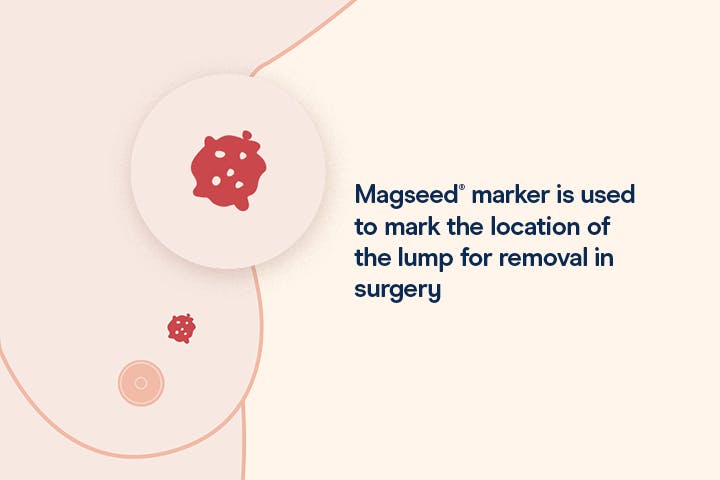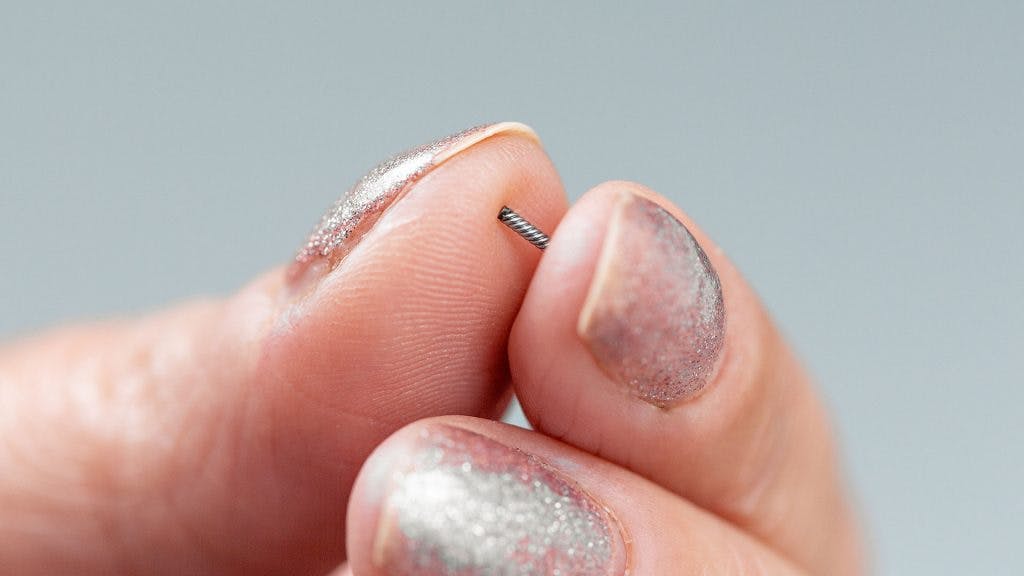Lumpectomy surgery with the Magseed® marker

What to expect from surgery with the Magseed® marker
If you have been diagnosed with early-stage breast cancer, or have a suspicious looking lump that has been identified as a possible tumor during screening, you may have been offered breast-conserving surgery – also known as a lumpectomy or partial mastectomy.
This is a surgical treatment that aims to completely remove the tumor in one piece and leave behind as much healthy tissue as possible. This technique is less invasive than having the whole breast removed (also known as a mastectomy), and often has better cosmetic outcomes.
Thanks to more regular screenings, breast tumors are now being identified earlier, allowing more women the option of breast conserving surgery.
This has the positive effect of improving outcomes and more women surviving breast cancer that ever before.
What is a lumpectomy or partial mastectomy?
A lumpectomy or partial mastectomy is a breast cancer treatment which involves surgically removing the tumor in one piece, as well as a thin margin of healthy tissue around it to ensure no tumor cells are left behind.
The amount of tissue that is removed will depend on the size of the tumor and the surgeon’s ability to accurately locate it.
How surgeons use Magseed®
In order for the surgeon to know the exact location of the tumor, there are a number of aids that can be used to ‘mark’ it. One of these is the Magseed® marker.

 Magseed® marker size comparison
Magseed® marker size comparisonThe Magseed® marker will be placed in the center of your tumor in advance of your surgery. Once you are in the operating room, your surgeon will first use your mammogram images to give them a rough idea of where the tumor is located in your breast.
A probe will then be used to detect the signal from the Magseed® marker, which will enable them to accurately locate the seed. This enables the tumor to be removed accurately and completely.
→ To learn more about the Magseed® marker, please read our guide here.
The procedure - what to expect

Your appointment in radiology
With a ‘Magseed® localization’ procedure, you will attend a placement appointment prior to your surgery.
Your Magseed® marker could be placed many weeks before your planned surgery date, at a time that suits both you and your surgeon.
When it’s time to place the marker, an anesthetic gel will be applied to the area of your body where the marker will be injected. Your radiologist will then use an ultrasound machine (or another imaging approach) to identify the area of suspicion found on your mammogram.
They will then insert the Magseed® into the area, ensuring the seed is placed accurately and securely. This is a quick and efficient procedure.
After your Magseed® has been inserted, you’ll be able to carry on life as normal up to your date of surgery, without fear of discomfort or displacement.
Removing the seed during surgery
The surgery to remove a tumor containing a Magseed® marker is a routine procedure for a breast surgeon.
With your Magseed® already placed, you will be ready to go straight through to the operating room at the agreed appointment time.
During the surgery, your surgeon will use a probe to detect and locate the previously placed Magseed® marker in your breast – with the markers magnetic signal accurately guiding them to the site of the cancer to be removed.
What happens after the surgery?
Once the tumor has been removed, it will be sent to pathology for closer examination, to determine whether the cancer has been completely removed.
If some of the tumor has been left behind, your surgeon will be able to remove smaller ‘shaves’ of breast tissue to ensure all of it is removed.
The likelihood of leaving any of the tumor behind with the Magseed® marker has been shown to be very low.
Where can I find out more?
If you have any more questions about your surgery, please do ask your surgeon or the hospital team.
Thousands of surgeons and radiologists from across the world now use the Magseed® marker. You can hear our interviews with a selection of these surgeons on our videos page.